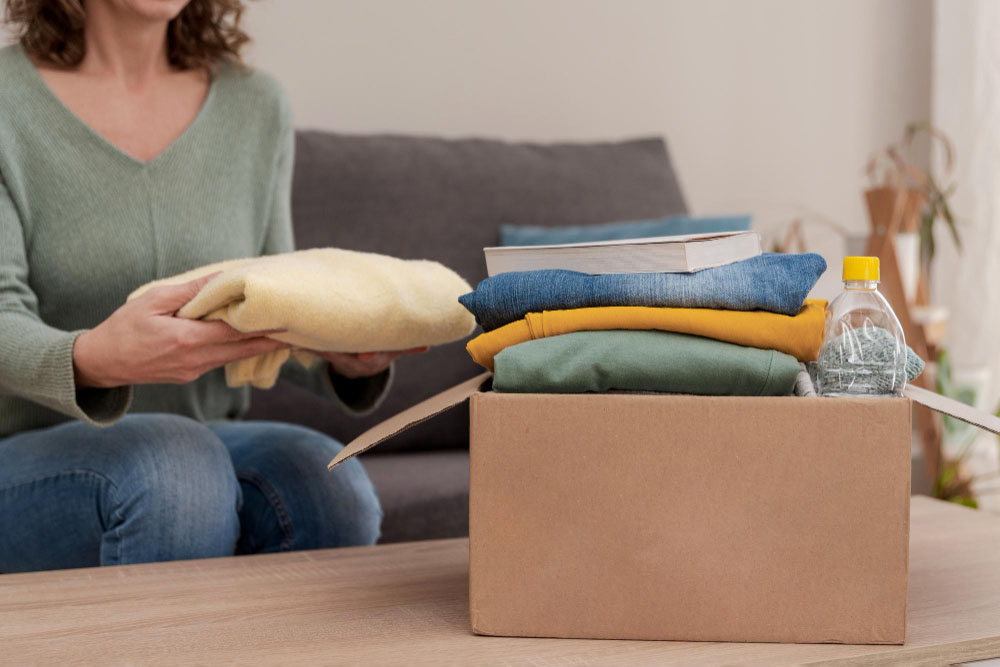How to Pack Clothes for Moving – Tips for an Organized Move
Hey there - Jason Walker here, writing on behalf of National Movers. If you’re anything like me, you’ve probably stood in front of a closet (or two) on moving day and thought, “Where on earth do I begin?” Trust me, I’ve been there more times than I can count. My family moved from Savannah to Chicago when I was just 10, then later to Austin, and now I live in Nashville with my own family.
How much will my move cost?
Let us help match you
Thank you!
Your movers will contact you shortly.

Written by: National Movers Team
NationalMovers team provides expert insights, mover comparisons, and practical resources to help you make informed moving decisions. Whether you need company reviews, relocation tips, or expert guidance, we’ve got you covered. Read more
Reviewed by: Jason Walker
Jason Walker is a moving expert with personal and professional experience, sharing tips, guides, and reviews to make your relocation stress-free. Read more
Last Update: 06/15/2025
Through all this hopping around, I’ve learned a thing or two about packing clothes efficiently and with minimal fuss. Let’s walk through my favorite methods for packing clothes without losing your mind in the process.
Prep & Declutter First – Wash, dry, and pare down your wardrobe before packing to lighten the load and simplify organization.
Choose the Right Packing Method – Wardrobe boxes protect hanging clothes; suitcases and duffel bags are sturdy and reusable; vacuum-seal bags save space; and heavy-duty trash bags work in a pinch.
Prevent Wrinkles – Roll clothes instead of folding, use tissue paper or garment bags for delicate items, and label boxes or bags to keep everything sorted.
Adapt to Your Situation – For short moves, you can keep it simple (even transporting items on hangers). Long-distance or time-crunched relocations may require more detailed labeling and protective packing.
Unpack Sooner Rather Than Later – Once you arrive, get your clothes out of boxes and bags quickly to let them “breathe” and avoid set-in wrinkles.
Best Overall Value Best Overall Value

- Nationwide availability
- Clear pricing, no hidden fees
- Premium door-to-door service
Need Help? Call Now
855-930-4574- Nationwide availability, over 25 years of experience, premium door-to-door service

- Reliable moving & Storage solutions
- Top-quality services, trained staff
- Reliable moving & Storage solutions, top-quality services, trained staff
Preparing to Pack Clothes
Before you start tossing your shirts and jeans into boxes, it’s important to figure out a basic plan. Having a plan saved me a lot of headaches when my sister Megan, a professional photographer and mom of four, called me up one day: “Jason, I have to move again – any suggestions?” Of course, I jumped to help. And you know what? She thanked me about a hundred times because she finally avoided wrinkly dresses and missing socks.
Now, let’s cover the basics of prepping your closet for the big day.
Best Methods to Pack Clothes for Moving

Now that you’ve done your prep work, let’s talk about how to store, fold, and transport everything without creating chaos. Over time, I’ve experimented with multiple approaches – from fancy wardrobe boxes to cramming everything in suitcases. Each method has its perks (and some downsides), so consider mixing and matching what works best for your situation.
Get matched with the best mover for your needs!
Thank you!
Your movers will contact you shortly.
Packing Clothes for Different Scenarios
Not all moves are created equal. Packing for a short jaunt across town can be entirely different from preparing for a big cross-country trek. And if you’re in a time crunch, well, that’s a whole different story. Let’s explore each scenario so you can pack in a way that matches your specific needs.
Pro Tips for Wrinkle-Free and Organized Packing
Sometimes your wardrobe might include more than just T-shirts and jeans. Formalwear, shoes, and accessories can be tricky, especially if they’re valuable or have sentimental worth. Let’s look at a few pointers on dealing with these items.
So, Which Moving Company Can Handle All This?
Now that you know where to find free boxes, let’s talk about making sure you pick the best of the bunch. Not every free box is a winner, and a little vigilance now can save you a ton of trouble later.
Planning a move? Find the perfect mover to match your needs and make your relocation stress-free!
932-465-6888- Allied Van Lines: I used them during a busy summer move. Their team was punctual, and they handled my boxes with care. However, they can be a bit pricier if you’re moving an entire household across multiple states.
- North American Van Lines: I tried them when my sister moved from Texas to California. They provided clear cost estimates and a helpful tracking system. On the flip side, scheduling in peak moving season was a bit challenging.
- Two Men and a Truck: A friend in Chicago swears by them for local moves. I helped him once, and the movers were quick and friendly. They even offered handy tips on loading the truck efficiently. But for longer distances, you might find more specialized carriers who offer better rates.
- U-Pack: If you’re not afraid of a little DIY, U-Pack is affordable for cross-country hauls. You load your items into their trailer or container, and they pick it up. It’s a cost-effective method, but be prepared to do the packing and loading yourself.
- Local Movers via National Movers: Sometimes, you need someone who knows your region inside and out. National Movers lists local companies across America, including small firms that might be more flexible. The search directory is straightforward, and you can compare quotes to find a match that fits both your budget and timeline.
In my experience, a lot depends on your priorities: speed, cost, convenience, or full-service perks. If you have the budget and you’re short on time, full-service movers will handle everything from packing your clothes to reassembling furniture. If you’re watching your wallet, consider renting a truck or container service and doing the packing yourself.
Moving can stir up a mix of excitement and anxiety – believe me, I’ve felt it all. But taking the time to pack your clothes the right way helps relieve a lot of the stress. Whether you’re heading a few blocks away or trekking across the country, these methods can help ensure you’re not living out of wrinkled piles of laundry in your new place.
If you’re feeling overwhelmed or just want a reliable crew to handle the heaviest parts of your move, check out National Movers. We’ve got a detailed directory of companies nationwide, each with its own set of strengths. I’ve personally used a handful of them – some for short hops and others for big cross-country journeys. I’m always impressed by the commitment to customer service, transparent pricing, and professional handling of my belongings.
My Verdict? If I had to recommend one place to pick your moving ally, I’d say start with National Movers. It’s not just because I work here (though I do love what we do!). It’s because I’ve seen first-hand how our directory matches people with the right mover for their unique situation. Ultimately, a seamless moving experience isn’t just about tossing clothes into boxes; it’s about choosing a partner who respects your timeline, your budget, and the stuff you care about.
Got more questions? Feel free to reach out or browse National Movers for additional moving tips and resources. Trust me, a little planning now will pay off big when you’re settling into your new home – free of wrinkles, confusion, and worry. Best of luck, and happy moving!
FAQs About Packing Clothes for a Move
What’s the easiest way to pack clothes quickly?
If time’s running short and you still have an overstuffed closet, go for simple hacks. Heavy-duty trash bags can be a lifesaver – just gather a few items on hangers, slip a bag over them, and you’re good to go. Suitcases also come in handy, especially if you want something more durable than plastic. The main point is to keep clothes together with minimal folding. That way, you don’t have to mess around with them when you arrive.
How do I pack clothes to avoid wrinkles?
Try rolling your clothes instead of folding. This limits hard fold lines and usually keeps things looking fresher. If you’re transporting formal wear or delicate fabrics, garment bags are great for hanging items. You can also place tissue paper between layers to reduce friction and wrinkles. And if you have room in your budget, wardrobe boxes let you keep clothes on hangers, which helps them hang naturally.
Should I unpack clothes as soon as I arrive?
It’s generally a good idea – especially if you want to prevent new creases from forming. Once your clothes have been bundled up for days (or even weeks), freeing them quickly helps them “breathe” and smooth out. If you can, prioritize unpacking your wardrobe so you don’t have to rummage through bags or boxes every morning.
Can I use vacuum-sealed bags for all types of clothes?
They’re amazing for bulky items like winter coats and sweaters because they save space. But you’ll want to be careful with delicate pieces like silk or items prone to permanent creasing. If you squeeze out too much air for too long, those fabrics might end up with set-in wrinkles. For your finest garments, skip the vacuum-seal and opt for lighter folding or garment bags.